Introduction
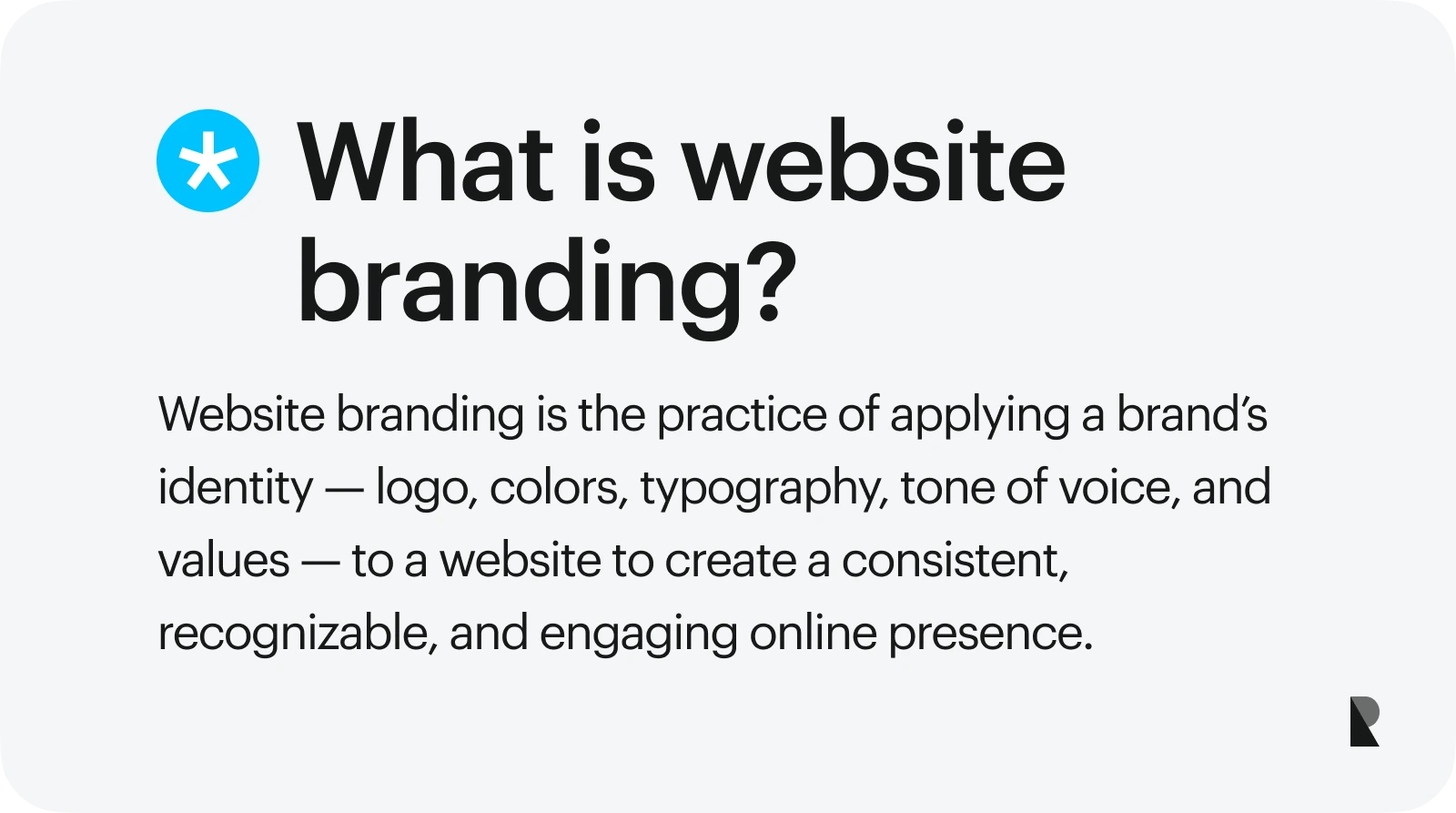
You've officially launched your website on the Internet. The website looks excellent, with stunning multiple brand colors and creative animations. At first glance, you thought you made a good choice.
Nevertheless, you wrestle with second thoughts, wondering if it aligns with your brand. This is where the essence and idea of branding and web design should work together to establish a unique and recognizable online presence for your business.
The importance of branding in website design is now more acknowledged than ever, given that nearly everyone depends on the Internet for various needs, including research, bookings, and purchases across different types of websites.
Developing and launching a website without further branding considerations in your design can lead to a frustrated and confused audience.
Designing a website with brand consistency can provide a strong connection with the right audience while presenting the vision and idea of what your business stands for and is committed to. In many cases, partnering with a seasoned full service branding agency provides the strategic clarity needed to ensure that every design choice strengthens long-term brand equity.
Branding isn't a decorative layer to mask or alter the products or services you are offering to your target audience. Instead, effective branding exceeds the core deliberation of your business values, commitments, and offerings, adding considerable benefit.
Everything from the name and visual content, such as brand colors, layout, and other recognizable branding elements, represents your brand. It always simplifies, clarifies, and transforms complex brand messages into simple yet clear and concise communication elements of your business.
While a website is always a practical means to transmit your business offerings and exposure, integrating a well-crafted brand identity can build a consistent, genuine, and engaging user experience that can help you build credibility.
Consistent and recognizable branding will always be a significant factor in your digital marketing success, as it can intuitively resonate with your target audience. Your brand presentation can make or break your branding strategy to attract consumers and build credibility for your products or services.
A compelling, consistent, and trustworthy brand presentation can stimulate the curiosity of your potential consumers and draw them to learn more about business.
In this article, we will discuss the role of branding in web design. We will discuss its importance and critical considerations and show some great examples to guide you in crafting a unified visual identity for your website.
By the end of this article, you will gain a deeper understanding and confidence to showcase your business effectively and attract the target audience you've always aspired to work with.
This includes integrating web design elements such as brand logos, colors, typography, and content to deliver a clear and memorable user experience that resonates with the target audience about a business, organization, or individual.
Website branding is not only limited to visual identity but also includes SEO-driven branded content, web copies, and best practices essential in attracting and converting leads.
You can think of some popular brands you have positive or negative feelings about, such as Coca-Cola, Mcdonald's, and Starbucks. These brands are popular because they have created positive feelings and user experiences in the long run.
In the same way, people have emotional responses when they see your website. Website branding aims to create a cohesive picture of your brand’s personality on the World Wide Web.
Website branding creates strong brand identity bonds, consumer trust, and emotional attachments. To build authority with your target audience, your website design should differentiate your brand from your competitors, help you stand out, and stay strong even during price competition or minor issues with your products or services.
Lacking positive website branding requires you to convince your target audience every single time you get ready to make a sale or offer.
Why do you need strong branding for your website?
With more new businesses and products being launched daily (thanks to the Internet), brand strategy is more necessary than ever. A strong brand identity is essential for any business nowadays, especially if you want to establish a solid brand recognition that stands out from the market competition.
A strong brand represents your business in a sea of competition and can act like a business card to help you build customer trust and drive sales.
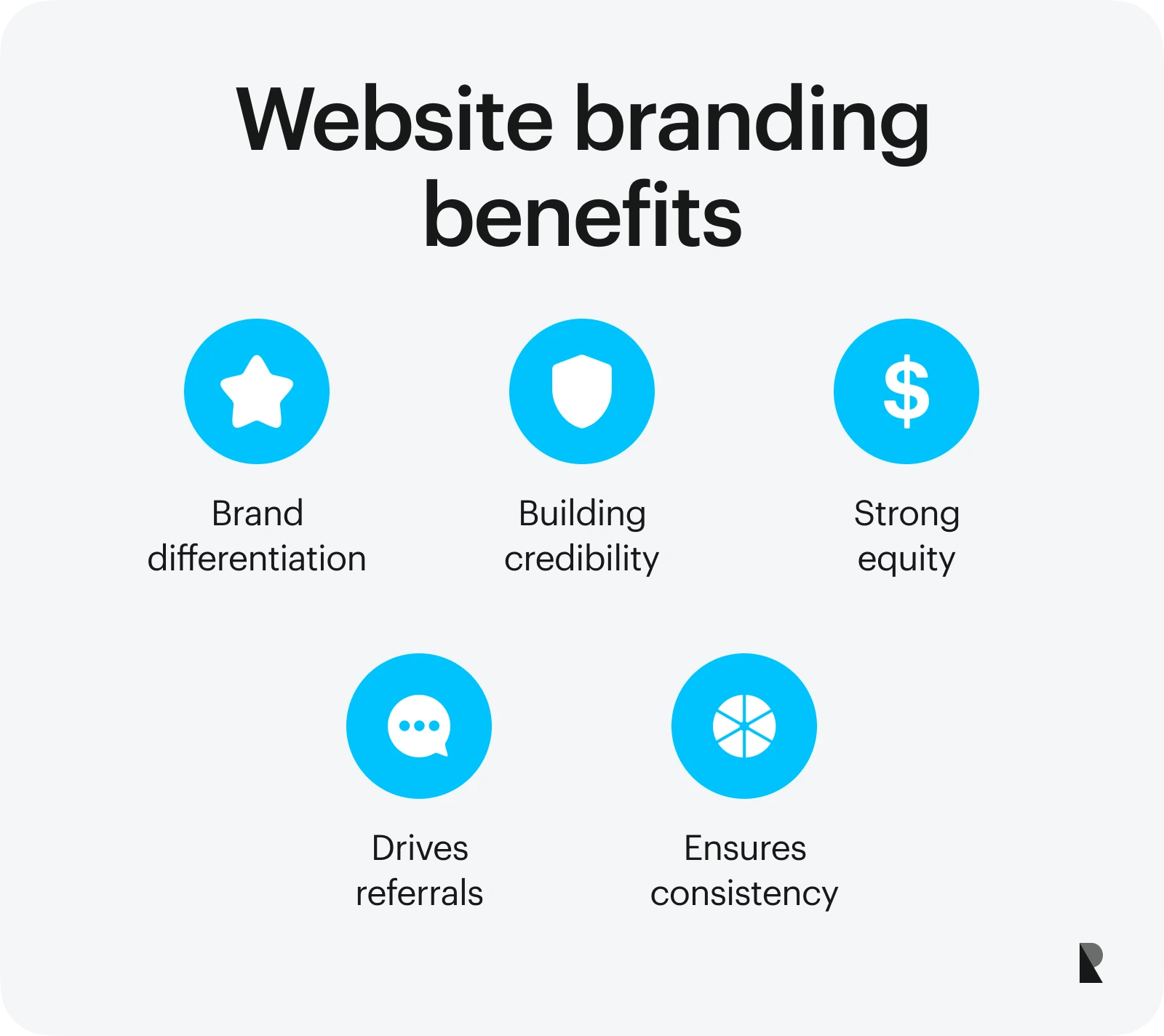
With more new businesses and products being launched daily (thanks to the Internet), brand strategy is more necessary than ever. A strong brand identity is essential for any business nowadays, especially if you want to establish a solid brand recognition that stands out from the market competition. A strong brand represents your business in a sea of competition and can act like a business card to help you build customer trust and drive sales.
Strong website branding communicates what you stand for and what distinctive and meaningful benefits you can provide your target customers. When people know your strong brand identity and its unique attributes, they quickly understand and are willing to spend effort and money to be a part of the business goals, whether purchasing a product or subscribing to services. A trusted brand often influences the positive decisions of your customers as they navigate through the website content.
Your branding strategy should include the aesthetics aspect of your website and promote your brand's voice using web design elements, interface, and social channels, differentiating your online presence and improving your company's overall value.
Here are five significant reasons why strong website branding is crucial for your business success:
1. Brand Differentiation
A strong brand identity can help your website stand out in a crowded marketplace. This extends to both local and international potential customer fanbases that the Internet can reach from all parts of the world.
When customers think all products within a category are identical, with no distinct advantages, they choose whichever is available at the lowest price.
This is when a strong brand story stands out among the rest of the competition as it can influence the customers' decision, leading them to choose your products or services regardless of the price competition.
2. Credibility and Trustworthiness
Your current branding should communicate professionalism and reliability to visitors. Websites with branded imagery-driven designs can help customers trust a brand more, even if it is a new website.
Trust is a critical key factor in e-commerce and other transactional-type websites, as it directly affects a user's willingness to make online transactions and share personal information.
Strong brands always create trust and emotional attachments, resulting in deeper relationships between the target customers and products that withstand pricing wars.
3. Establish Brand Equity
A strong website branding can establish a solid brand equity. This can provide many benefits, from higher profit to greater store visibility. A strong brand identity can make customers pay a premium for products with exceptional benefits.
It can make them stay loyal to your brand, buying them more often in greater volume without offering promotional incentives to the website to influence their buying decisions.
4. Effective word-of-mouth marketing
From logo design to complex website components, strong branding can provide solid social proof that carries credibility. According to Nielsen, 92% of consumers would likely subscribe to a product or service recommended by friends and family over all forms of advertising.
Strong brand recognition and social media presence can empower customers to effectively influence and promote your products.
5. Brand Consistency
Regardless of your website goals, it's essential to always consider brand consistency across all elements or components when dealing with web design.
Consistent branding across all channels, from logos, colors, typography, and images, can make potential customers feel confident that they are in the right place and interacting with a legitimate and established business. This also includes any marketing efforts on social media platforms and other branding channels consumers may encounter online.
Importance of a strong brand identity in web design
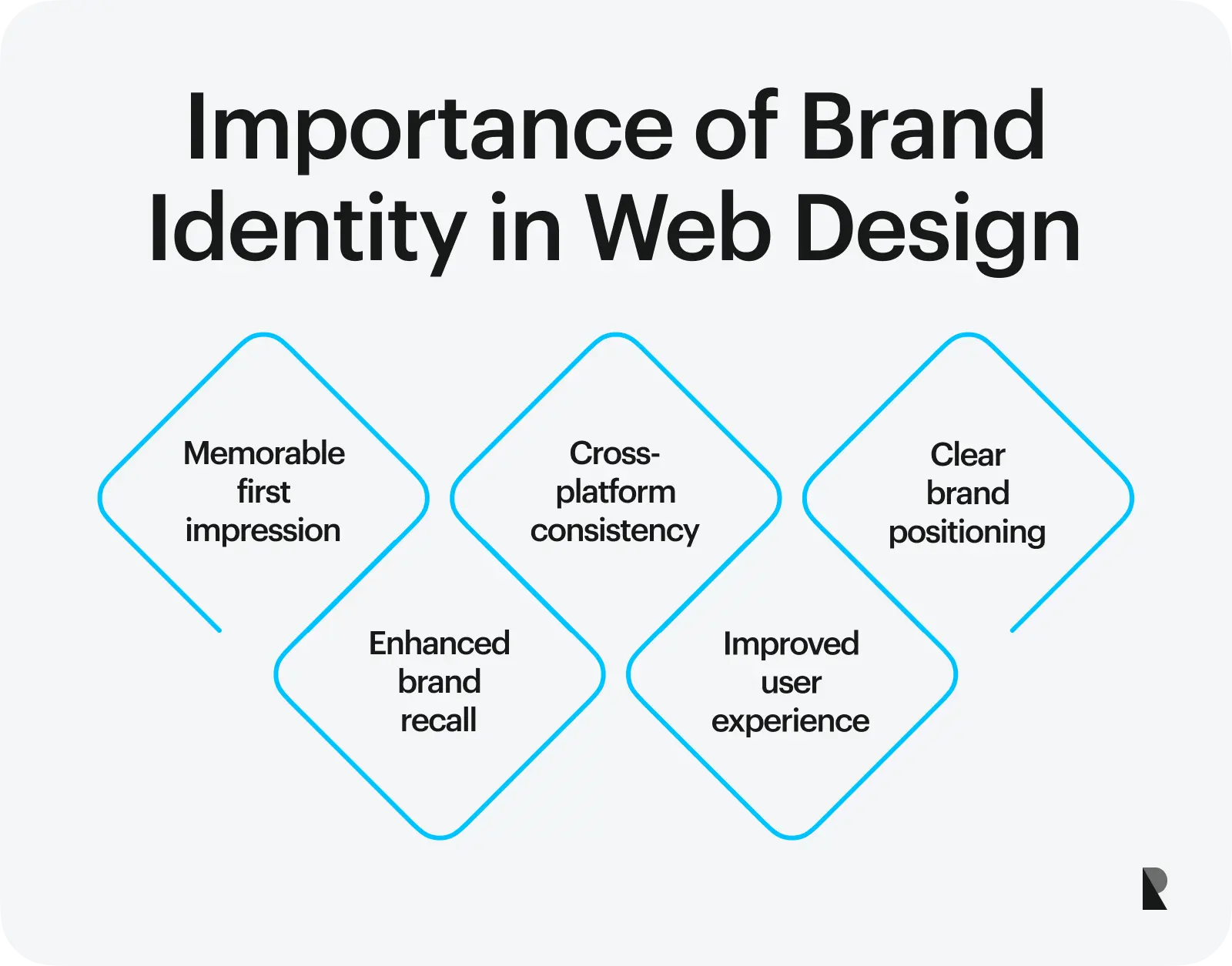
People often need clarification on brand identity by designing a logo, throwing creative design elements on a website, persuasive ads, and excellent marketing efforts.
Unfortunately, brand identity is way more than that. A great branded website's design should follow a brand style guide and execute a comprehensive brand strategy to be effective.
Using design elements such as logos, colors, images, and typography, you can visually represent your company and communicate its underlying psychological values to create a powerful and resonant brand identity.
So, when customers visit your website, what do you want them to think? What do you want them to remember? All these questions can be answered and implemented through careful website design planning.
Here are some of the meaningful reasons why you should prioritize incorporating strong branding in your website's design:
To create an excellent first impression
It is said that a first impression can last a lifetime. The eyes take approximately 2.6 seconds to settle on critical areas of a website that can convert or discourage potential customers. Your website is often the first interaction users have with your brand.
The initial encounter with a website and its content usually leaves a lasting impact, shaping perceptions and memories for the long term. A strong brand identity can instantly create a positive and memorable first impression with the potential customer.
To create consistency across all platforms
In website branding, consistency is one of the most essential ingredients for success. A cohesive brand identity across the website and other channels can strengthen brand recognition. If you bring consistency to your branding strategy, you can build a brand that stands head and shoulders among your competitors.
To create a strong brand position
A strong brand identity can determine how your brand or company fits within the digital marketplace relative to other brands. This includes how your brand sticks to the minds of consumers and how it differentiates itself from competitors.
A branded website expresses the advantages of your product or service quality, benefits, customer service, and other factors that give your brand a competitive edge.
To establish brand recall
A strong brand identity can also produce a lasting recall to help customers recognize a brand when prompted with a product category or a specific need.
This can also be a good measure of how well a brand is remembered by its target audience, even after access to a webpage or any visual marks.
To provide a great user experience
In recent years, web design has increasingly become UX- and UI-focused. Users interacting with a website or platform that reflects a consistent and well-defined brand identity enhances the overall experience.
Using the appropriate design elements on your website, you can create a distinct user experience that differentiates your brand from others. Consistent and visually appealing design elements enhance navigation and usability, making engaging visitors with your content more accessible.
Key Considerations for Branding Your Website
How you present your brand, from visual marks, voice, tone, and message, establishes your company's personality and values. Strong branding can affect all factors of your business, including brand awareness, digital marketing, and customer feedback.
Aligning web design with brand values can be a comprehensive and time-consuming process as it involves several aspects and considerations to establish an adequate representation of your brand online.
As web designers, when designing and developing an effective branded website for a business, you must consider the following key factors and essentials to help you build a brand that resonates with users, builds trust, and contributes to long-term brand success.
1. Visual Design
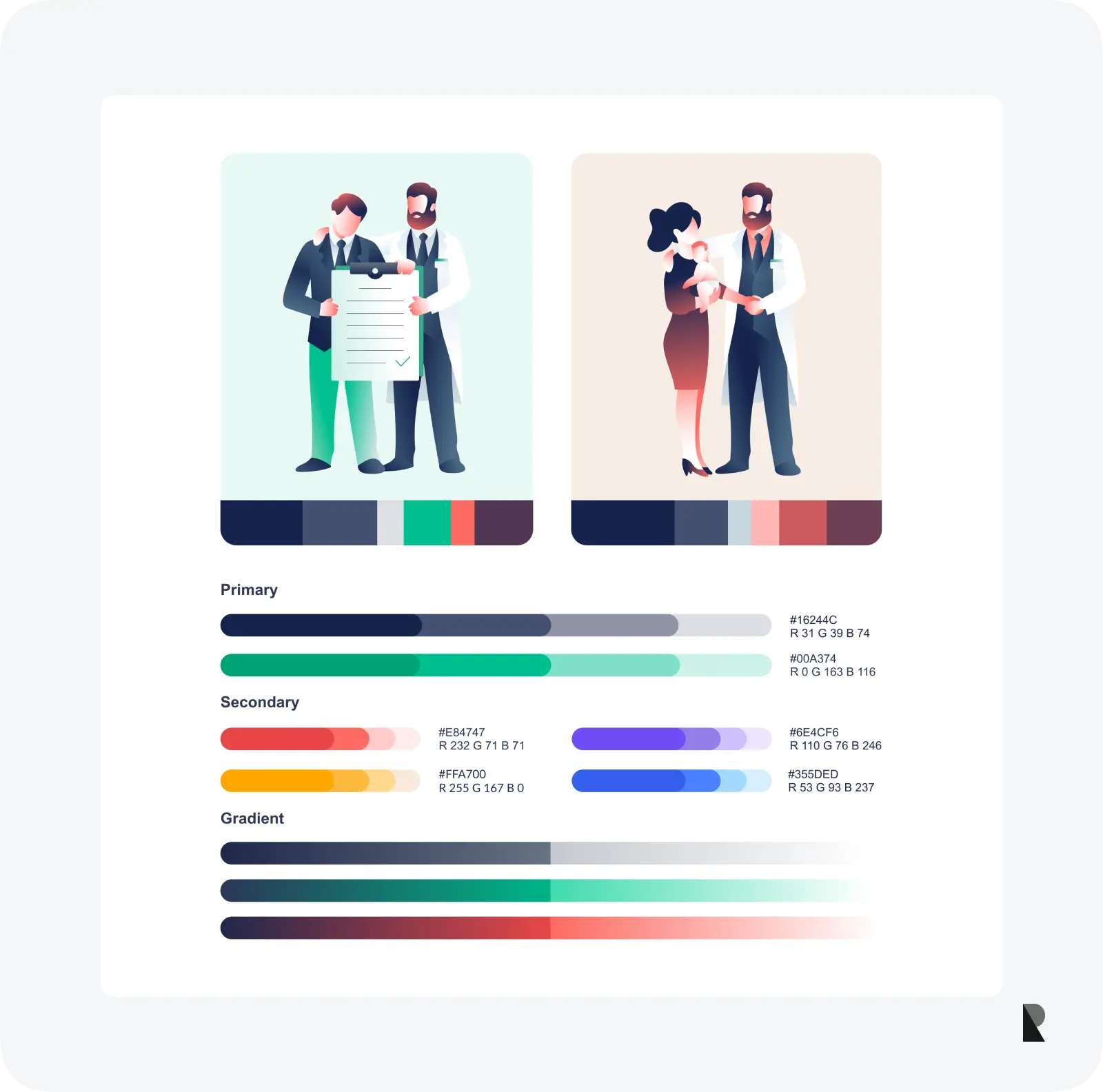
Visuals play a critical role in shaping a great brand identity. When creating a brand, it's essential to use suitable graphics, colors, fonts, themes, and user interface that reflects your brand, values, and offerings.
Your visual design should evoke emotions, influence how the brand is perceived, and provide a consistent experience for diverse audiences, including those with different abilities.
Whether it's a website or marketing materials, your visual design should tie together other elements of your brand guide to create a meaningful brand presence that resonates with your target audience.
2. Content

Content has been the reason behind almost every profit made on the Internet. Web pages ranking on the first result of Google typically have an average word count of 1,447 words, according to a study analyzing over 11 million SERPs.
The success of your website marketing efforts depends on the quality of your brand content. When crafting your content for your brand, make sure that it reflects the core principles and beliefs that guide your business and should communicate what you offer, highlighting key features, benefits, and values.
3. Statement

People are hesitant to trust a brand that they need to learn. One of the critical factors to your brand's market position is your brand statement.
This includes slogans and messages that express what your brand stands for, its mission, values, and unique selling propositions. Your brand statement should be brief and memorable but provide a quick overview of your brand's identity and set the tone for its communication.
4. Offerings and Pricing
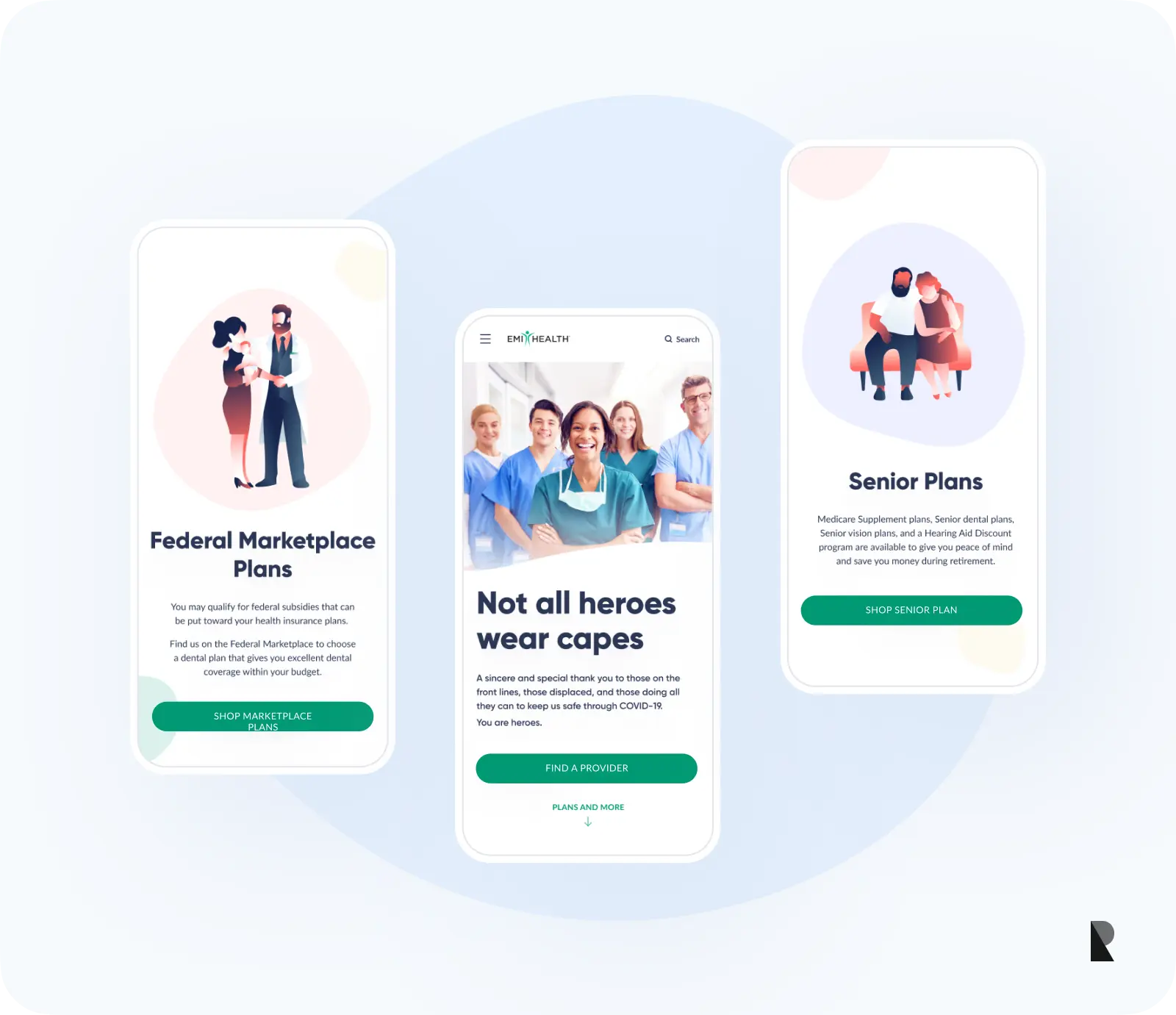
How you present your products or services and their pricing is the most crucial part of website branding. How your website offers products or services can influence the consumer's buying decisions.
With a few clicks of a mouse or tap on a phone, consumers find and select products/services with names and descriptions they believe they can trust. High-quality images, an intuitive layout, clear product descriptions, and a user-friendly interface can contribute to a positive user experience and brand loyalty.
Showing the price upfront can communicate transparency and trust to your target audience. Strategically, using promotions or discounts can attract and retain customers.
5. Social Proof

Visitors are more likely to engage in a product, service, or brand with a proven track record of success. Adding social proof like testimonials and reviews to your website can provide tangible evidence of the effectiveness of your offerings.
This can reassure potential customers who have never worked with you that what they are about to purchase or subscribe to is safe and trustworthy.
6. Social Media Marketing
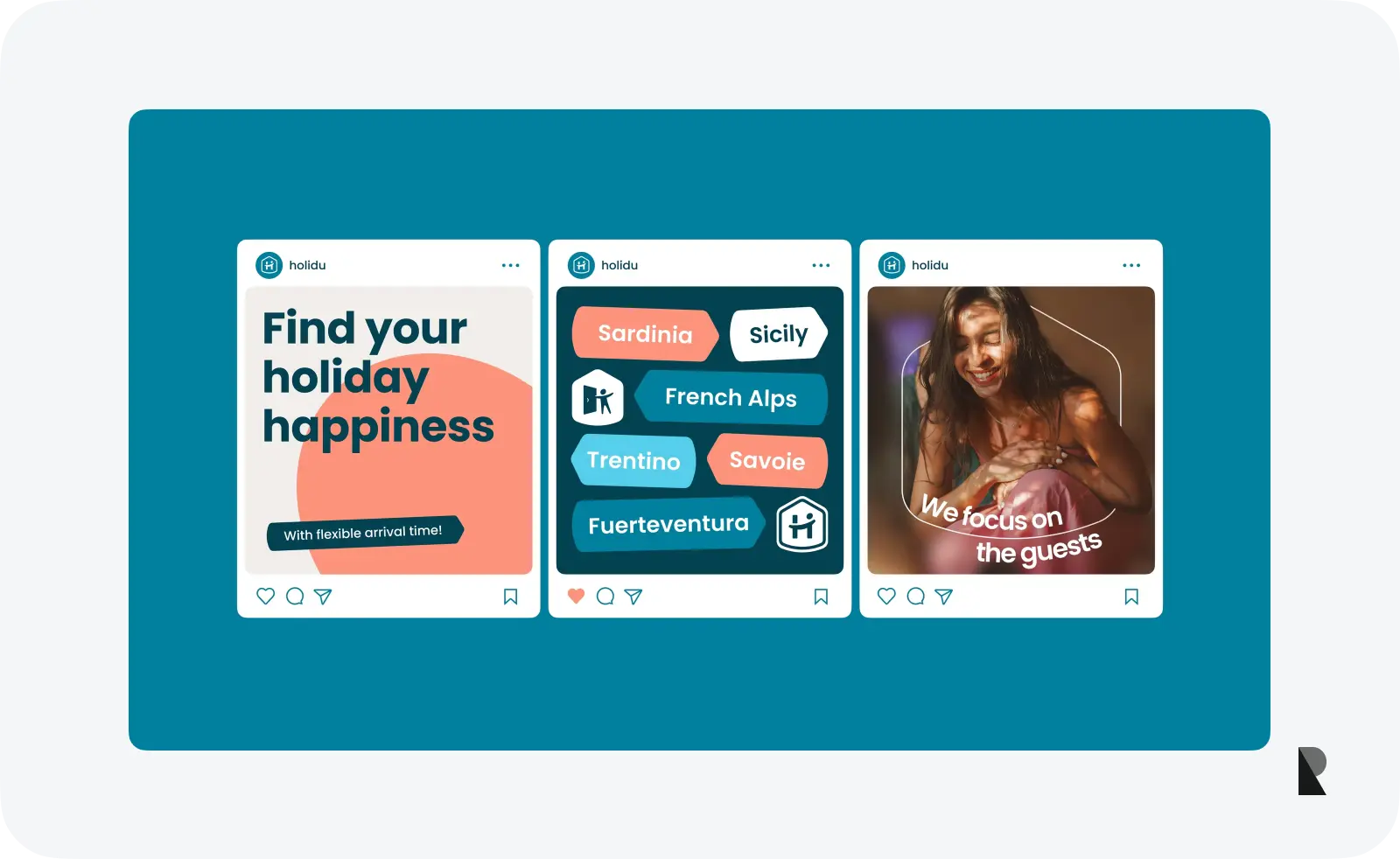
Social media has become essential to every business in today's modern business world. Social media websites like Facebook, Instagram, Twitter, and TikTok can help you promote products or services and engage with potential customers.
In recent years, Social Media Marketing (SMM) has proven to establish your brand recognition, drive traffic to your website, and influence the buying perceptions of target audiences.
When branding for social media, it's crucial to ensure consistency across various outlets, including colors, typography, logos, message tone, and content themes that reflect your brand personality. This creates a more engaging and recognizable presence for your audience.
7. Customer Service

Investing in customer service can be instrumental in retaining customers and providing a great user experience. It is an effective bridge and direct connection between your customers and business.
Providing top-notch customer service to your website can cultivate a support system that can transform your loyal customers into brand ambassadors.
Satisfied customers are more likely to become repeat buyers and encourage more customers to choose your brand over any other brand in the same category.
Inspiring Website Branding Examples
Designing a brand can take time and effort. Making web design decisions such as logos, fonts, colors, and layout to communicate your brand identity from scratch can be astounding.
With the right design inspiration and branding examples, you can use them as a launching pad instead of trying to compose everything on your own.
Below are some of the best resources to give you a taste of better branding that you can use on your business or project.
Discord

Discord is a popular chat application that was initially made for gamers but was later used for several types of communities and groups.
Its website uses a more conversational style characterized by its playful and expressive tone and bright colors. Discord's website also showcases excellent animation illustrations and clear messaging on its website copies.
Messaging and imagery have been its brand's strong points as they give a sense of community and communicate its core features and benefits well. Branding elements, including logos, themes, and typography, were used consistently across each webpage and application, giving it a persistent and recognizable brand identity.
Mailchimp
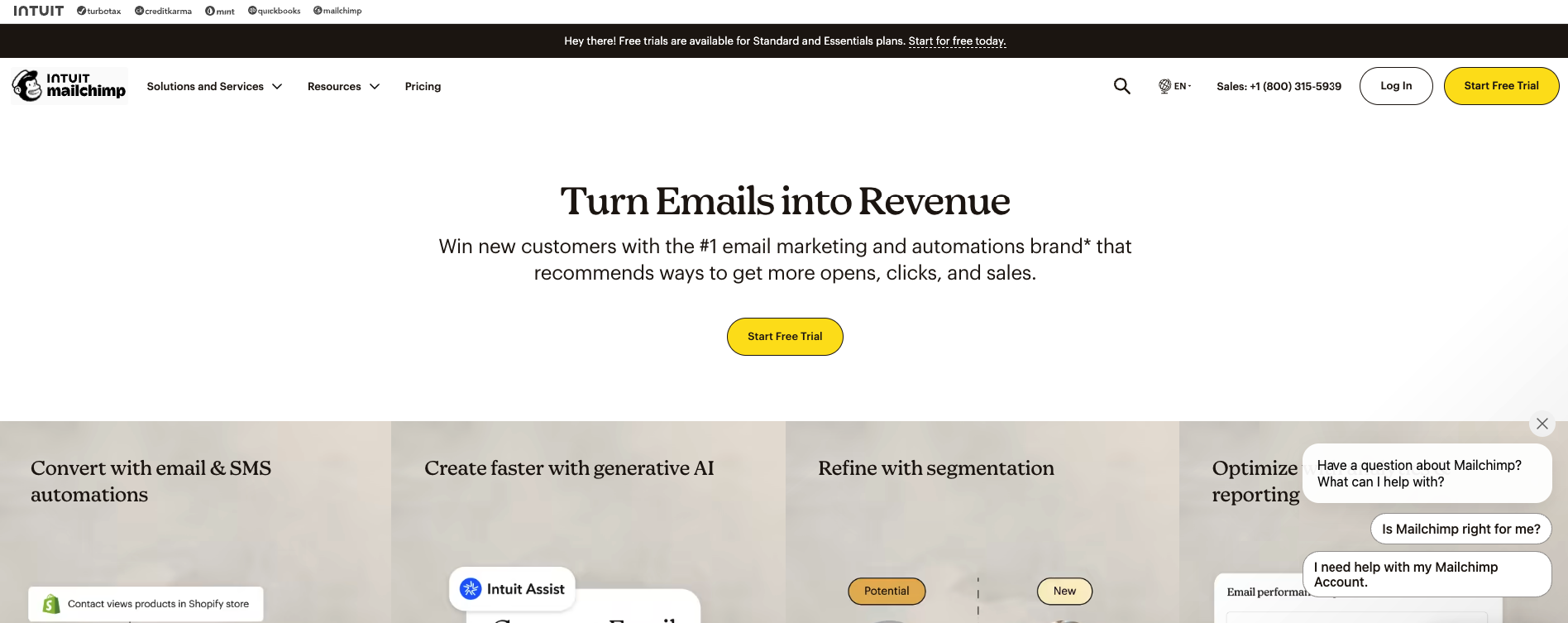
Mailchimp is one of the leading marketing applications for small and large businesses.
Its website uses a friendly and approachable brand with clever illustrations, clear website copies, and consistent schemes across its pages. Mailchimps website powerfully communicates its value propositions and essential features in a segmented but straightforward manner.
It also discusses its website's pricing plans, social proof, and resources to establish strong brand trust. Mailchimp's website uses an intuitive and recognizable design to encourage individuals and e-commerce businesses to use their services.
Nike
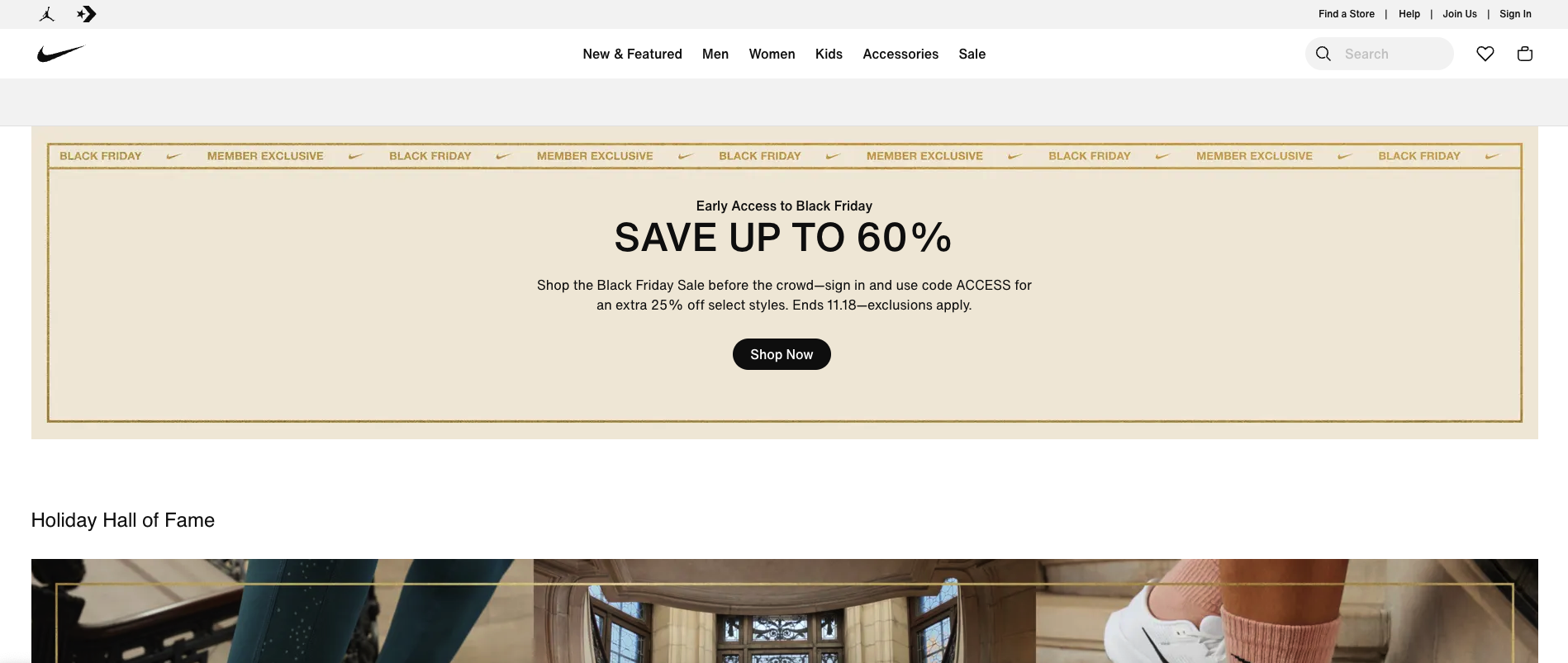
Nike is among the most extensive innovative products and services suppliers to athletes worldwide.
An e-commerce website, showcases high-quality images and descriptions of products in a categorized manner. The heavy usage of imagery emphasizes Nike's brand identity towards athleticism, innovation, and sports empowerment.
Nike provides a seamless e-commerce experience to help potential customers streamline checkout. Nike's iconic check logo, distinctive typography, and color scheme reinforce brand recognition and visual identity.
Paypal
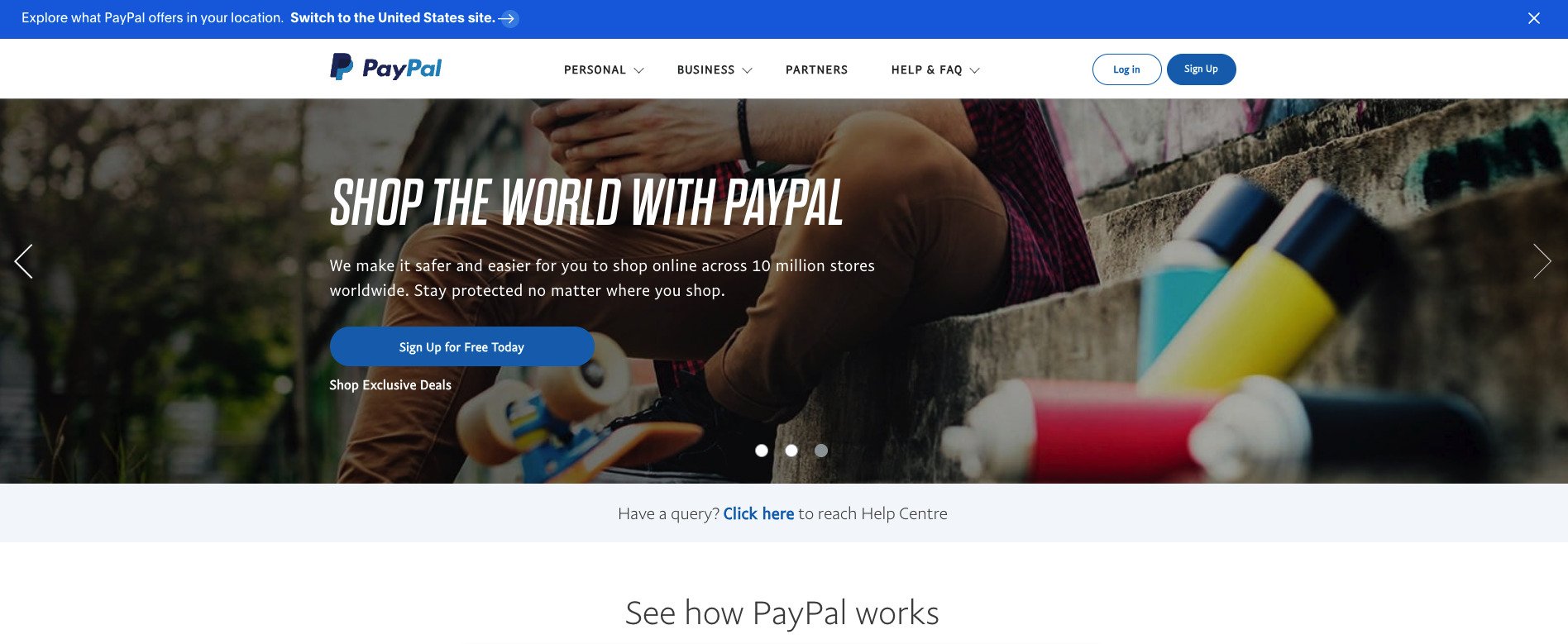
Paypal is an online payment platform that offers online payment services to individuals and businesses. Paypal is one of the favorite websites that users often use due to its global service reach.
It's easy to see why the PayPal website is considered one of the most successful brands. Besides its household name, it emphasizes trust, security, and clear communication about buyer and seller protection.
The intuitive design and navigation are also straightforward and offer multiple languages for non-English speaking countries. Paypal uses simple branding elements such as logos, color schemes, and typography, providing helpful information and resources about its services.
Clearbit
After evaluating a logo redesign, we determined the existing logo best represented the brand and shifted our focus to refining the website’s design. Collaborating closely with Clearbit’s marketing team, we streamlined workflows to enhance visuals, improve information architecture, and ensure a seamless handoff to development.
Following a Kanban process, we facilitated effective collaboration between design and development, resulting in elevated aesthetics and optimized website performance.
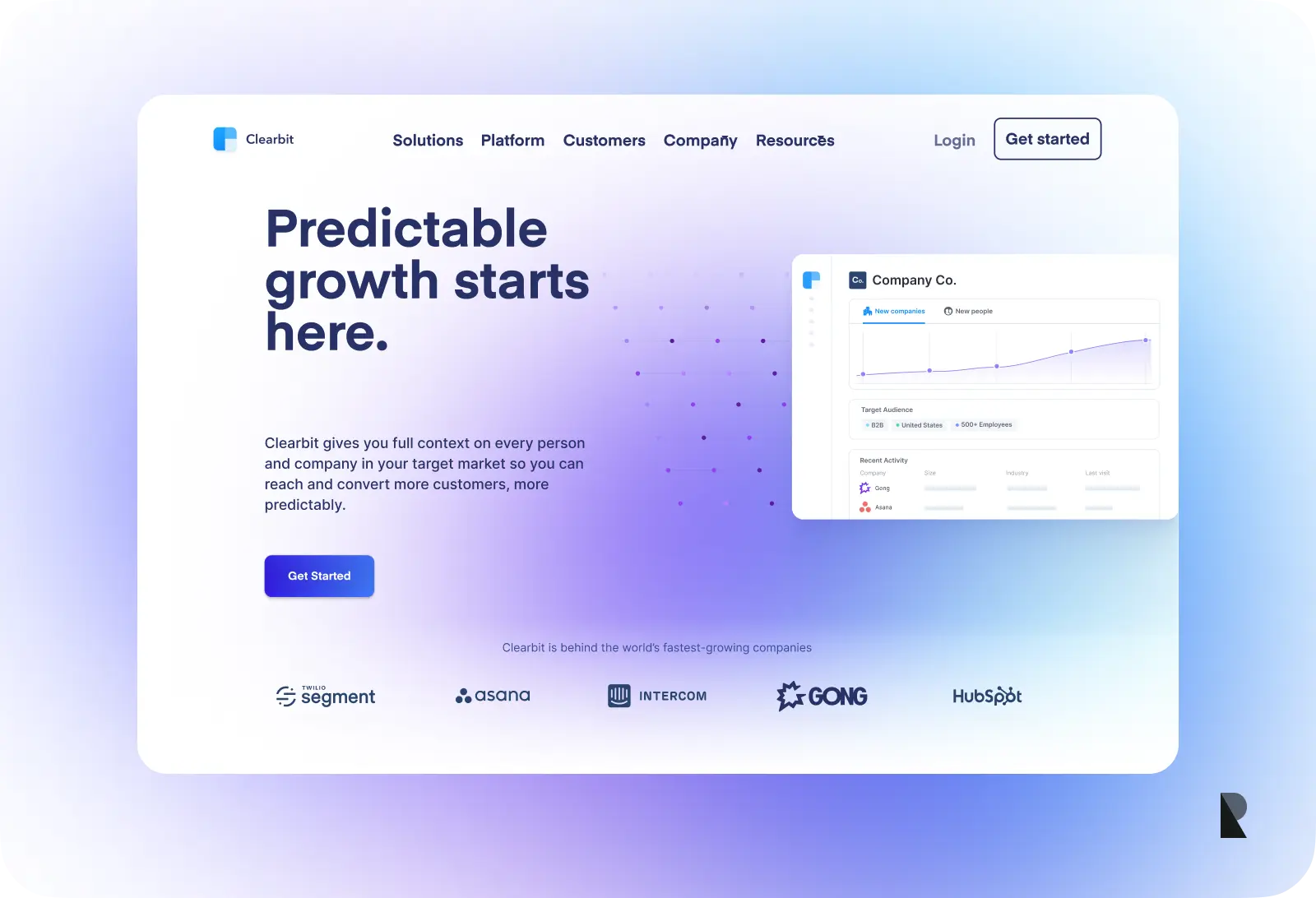
Rizzle
Rizzle began as a vision to build the leading discussion platform for the Instagram generation. Partnering with a dedicated founding team in late 2018, we helped shape an app with a focused concept and well-defined features.
Over time, Rizzle transformed into a major social network for creators on both iOS and Android, reaching over 34 million monthly active users at its peak. Today, Rizzle harnesses advanced AI to deliver a pioneering "no-edit" video creation platform—empowering anyone to create video content effortlessly.
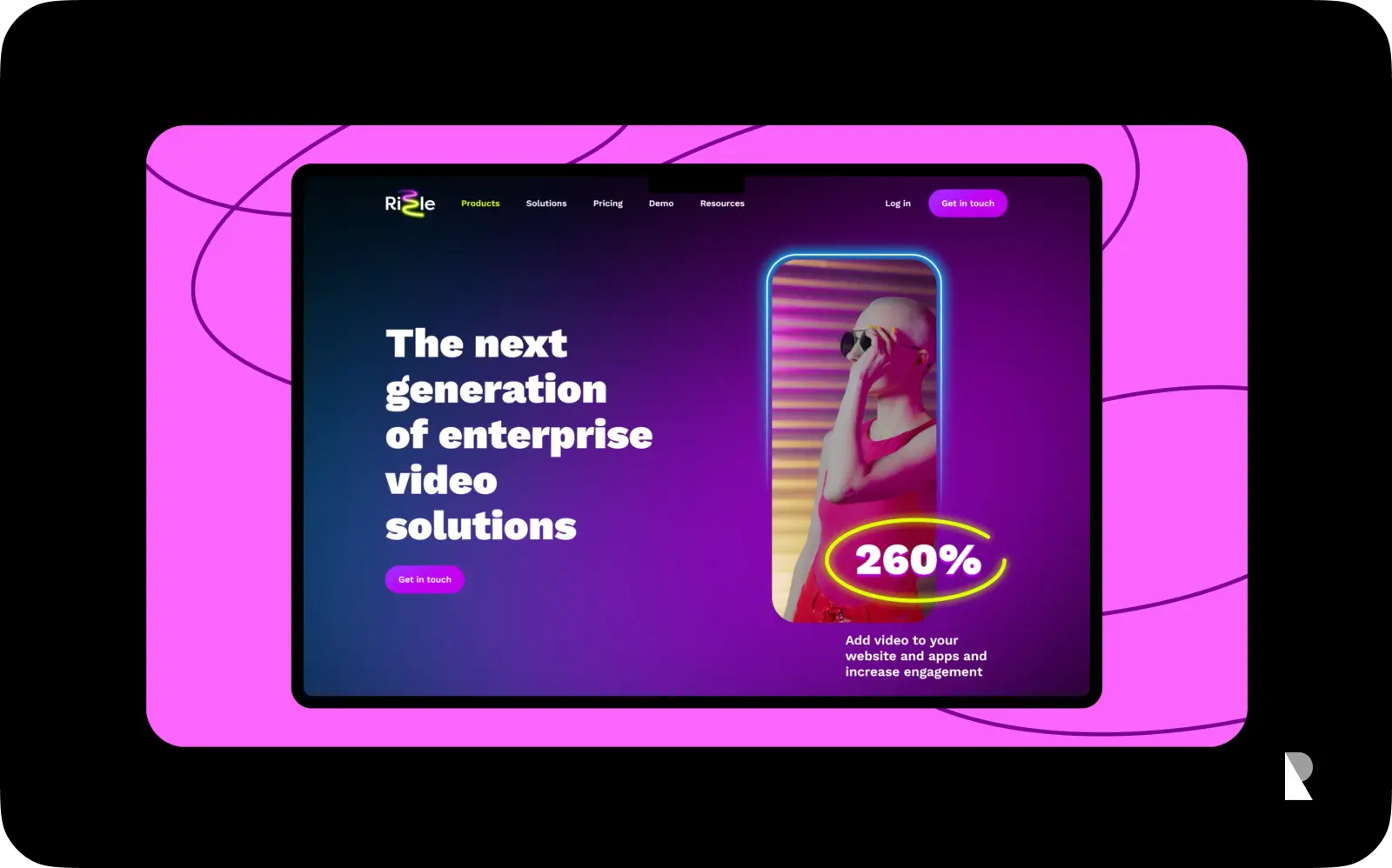
Strong Website Branding and Beyond
Website branding can be characterized by consistent visual elements, clear messaging that tells your customer who you are, and a user-friendly UI and UX experience.
Your website should always build emotional connections with your target audience and create a recognizable experience lasting for years.
When building a well-branded website, it's essential to consider the key points mentioned in this article.
With a well-thought-out branding strategy and web design, you can capture the attention of your target audience and establish a lasting connection beyond competition and pricing wars.
Nov 29, 2023
